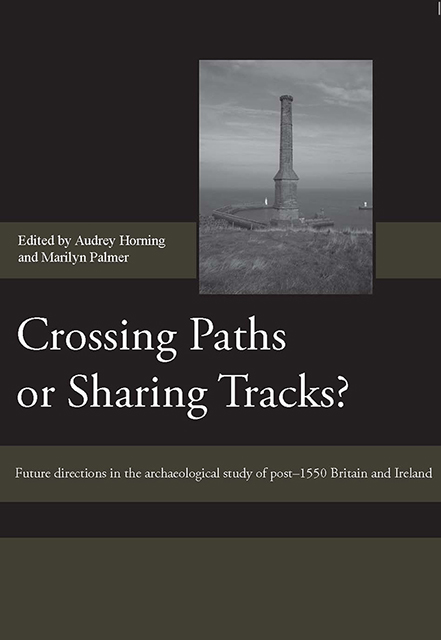 Crossing Paths or Sharing Tracks?
Crossing Paths or Sharing Tracks? Published online by Cambridge University Press: 07 March 2023
This chapter examines the way in which industrial landscapes have been perceived throughout the post-medieval period, and explores the eff ect on current research and conservation of prevailing attitudes to ‘landscape archaeology’ and ‘industrial archaeology’. Using a variety of examples, it is argued that industrial landscapes should be seen as neither urban nor rural but as entirely separate entities incorporating elements of both. Existing ways of looking at rural or urban landscapes are therefore inadequate for the technological, social and cultural complexities represented by industrial landscapes. One key theme that can be drawn out from the study of industrial landscapes is that of identity, and particular emphasis is given to investigating the ways in which industrial landscapes have given rise to specifically English identities.
INTRODUCTION
England is the birthplace of industrialisation. Almost all English landscapes can be said to be industrial landscapes, in that they have been shaped by the forces of industrialisation. Sometimes these forces have been very direct and are highly visible: as in the declining industrial conurbations of the West Midlands, or the former textile towns of West Yorkshire and Lancashire. Elsewhere, temporally more distant industrial activity has been softened by later land use: the gentle undulations of Derbyshire lead mining, the heavily wooded Ironbridge Gorge in Shropshire, or the almost suburban former ironworking landscapes of Surrey. Even in the apparent rural idyll of the post-medieval country estate it is possible to find steam-powered corn-mills and pump houses and electrical power stations. Indeed, the quintessential English farming landscape, withits quilt-like pattern of small fields and woodland, is a resource that was harnessed in a systematic way to provide food and other materials for the growthof English industrialisation in the 18th and 19th centuries.
Three main issues can be examined in relation to the industrial landscapes of England. Firstly, notwithstanding the fact that almost all industrial landscapes owe their underlying structure to topographical and geological factors, it is also the case that the flesh on these natural bones is the result of human agency. The extent and impact of this human agency is often overlooked, particularly, as Marilyn Palmer has recently reminded us, in rural and upland landscapes.
To save this book to your Kindle, first ensure [email protected] is added to your Approved Personal Document E-mail List under your Personal Document Settings on the Manage Your Content and Devices page of your Amazon account. Then enter the ‘name’ part of your Kindle email address below. Find out more about saving to your Kindle.
Note you can select to save to either the @free.kindle.com or @kindle.com variations. ‘@free.kindle.com’ emails are free but can only be saved to your device when it is connected to wi-fi. ‘@kindle.com’ emails can be delivered even when you are not connected to wi-fi, but note that service fees apply.
Find out more about the Kindle Personal Document Service.
To save content items to your account, please confirm that you agree to abide by our usage policies. If this is the first time you use this feature, you will be asked to authorise Cambridge Core to connect with your account. Find out more about saving content to Dropbox.
To save content items to your account, please confirm that you agree to abide by our usage policies. If this is the first time you use this feature, you will be asked to authorise Cambridge Core to connect with your account. Find out more about saving content to Google Drive.